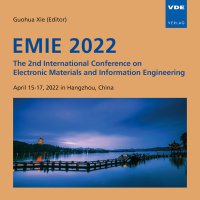Test and Calculation Methods of the Global Warming Potential for eco-friendly insulating mediums
Konferenz: EMIE 2022 - The 2nd International Conference on Electronic Materials and Information Engineering
15.04.2022 - 17.04.2022 in Hangzhou, China
Tagungsband: EMIE 2022
Seiten: 5Sprache: EnglischTyp: PDF
Autoren:
Wu, Yuewei; Ding, De; Bai, XiaoChun; Lv, Pinghai; Yu, Xiaobin (State Grid Shaanxi Electric Power Research Institute, State Grid Shaanxi Electric Power Co., Ltd., Xi’an, China)
Guo, Li (State Grid Ankang Electric Power Supply Company, State Grid Shaanxi Electric Power Co., Ltd., Xi’an, China)
Li, Guobin (State Grid Xinjiang Electric Power Research Institute, State Grid Xinjiang Electric Power Co., Ltd., Xi’an, China)
Liu, Zhe (State Key Laboratory of Applied Organic Chemistry, Lanzhou University, Lanzhou, China)
Inhalt:
Global warming is a huge challenge for the survival of humanity. SF6 as a super greenhouse gas is facing the end of being eliminated. (CF3)2CFCN and C5F10O as the substitute for SF6, the evaluation of the impact on climate change depends on the calculation of GWP. In this work, we introduced and summaried the calculation and testing principles of GWP. Further, the radiative efficiencies of (CF3)2CFCN and C5F10O were calculated by using the revised Pinnock curve based on the Oslo line-byline (LBL) model and density functional theory. Finally, we calculated the the global warming potential of (CF3)2CFCN and C5F10O based on the experimental values of the atmospheric lifetime and radiative efficiencies. The results show that the contribution of (CF3)2CFCN to climate change is significantly lower than that of SF6.


